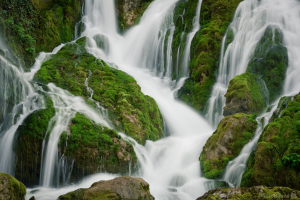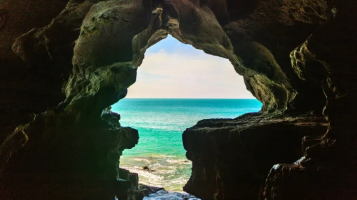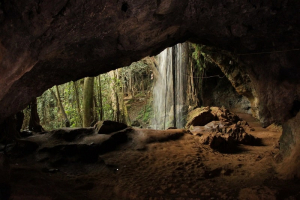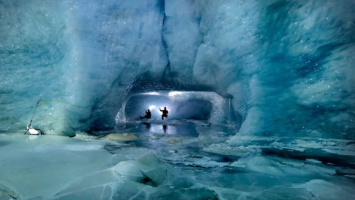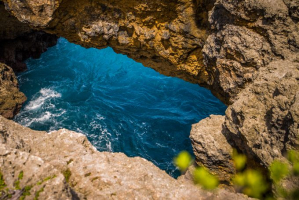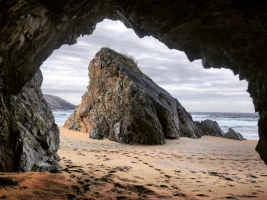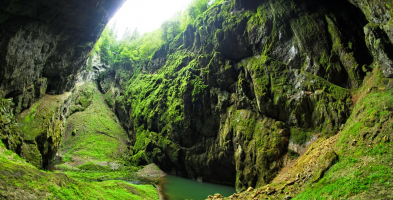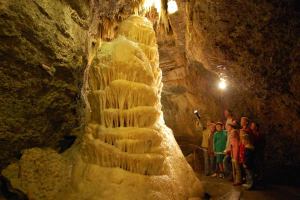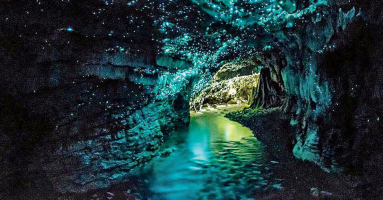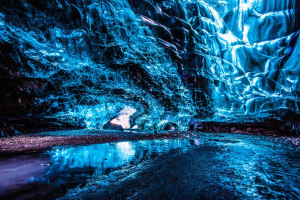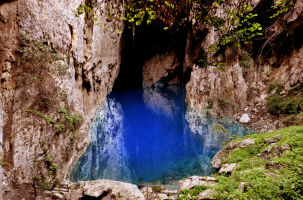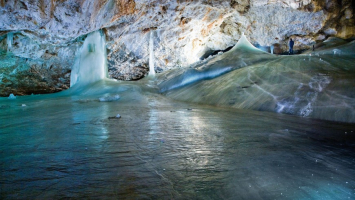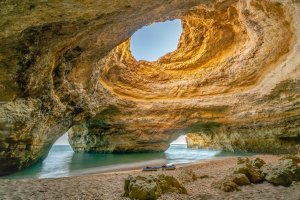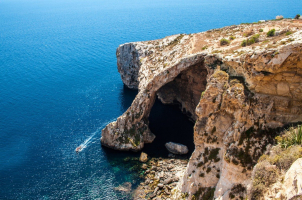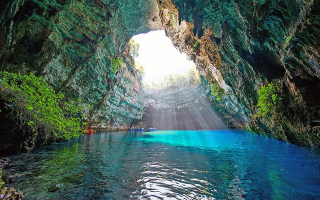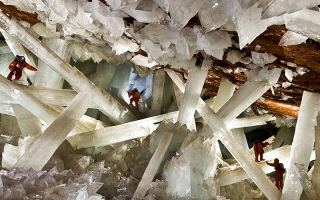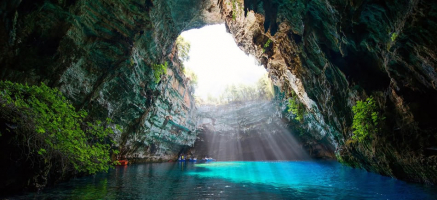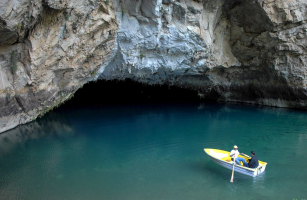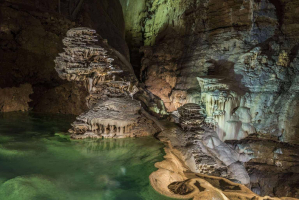Top 15 Most Beautiful Caves In Slovenia
Slovenia's natural beauties include deep underground caves as well as farmland and alpine beauty. Slovenia is home to around 8000 caverns. Only 20 of these, ... read more...however, are open to the public for exploration. Why? Because the others are too difficult to examine, hazardous, or not fully dug, the 15 that are open provide a fascinating peek of what lies beneath the surface of the earth. The most popular and frequented caves are without a doubt Postojna and Skocjan, but the others are well worth visiting as well. Let's take a closer look at 15 of Slovenia's most beautiful caves.
-
Postojna Cave, Slovenia's most famous and undoubtedly most visited cave, was first mentioned in the 17th century. Postojna Cave is a karst cave system at Postojna, Slovenia, that stretches for 24,120 meters (79,130 feet). It is the country's second-longest cave system, as well as one of its most popular tourist attractions. It is also one of the most beautiful caves in Slovenia. The Pivka River carved up the caves. The first people to enter the cave, however, arrived in 1819. Before rails were installed to allow tourists to truly explore the cave's depths, the cave became known as the first tourist cave attraction with electric lighting, with a gas engine train being the best mode of transportation.
The Postojna cave was initially reported in the 17th century by Johann Weikhard von Valvasor, a pioneer in the study of karst phenomena, while graffiti inside dated 1213 implies a far longer history of use. A new region of the cave was discovered accidently by Luka Čeč, a local man in charge of lighting lamps in the cave, in 1818, when the cave was being readied for a visit by Francis I, the first Emperor of Austria-Hungary.Various indigenous animals, such as the olm, call the caverns home, as evidenced by some in-cave aquariums along the way. The cave's performance hall has amazing acoustics and can accommodate up to 10,000 people! You'll also see Big Mountain Hall, Tube Hall, and a variety of intriguing stalactites and stalagmites.
Length: 24,120 m
Location: Postojna, Slovenia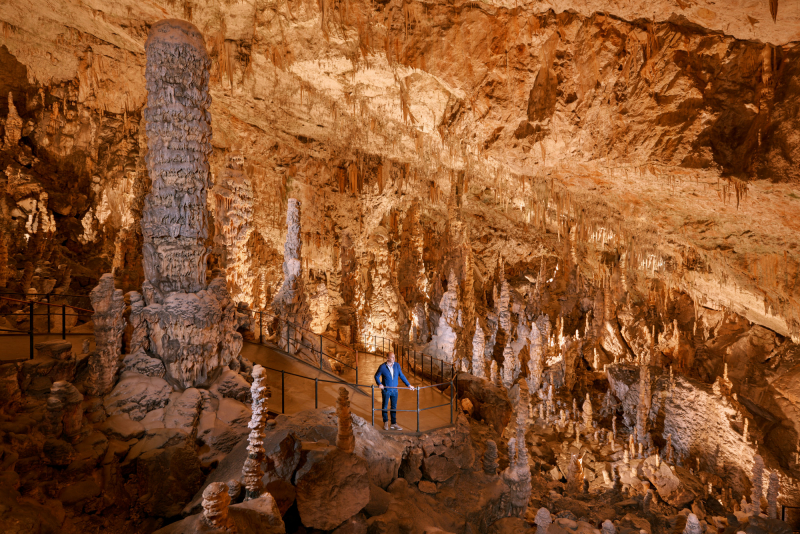
https://travelslovenia.org/ 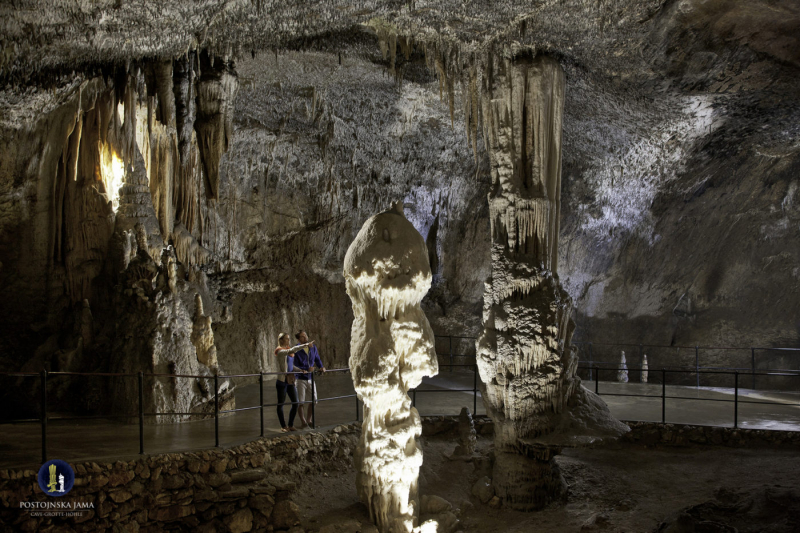
https://www.mondayfeelings.com/ -
This Karst cave has several intriguing and diverse stalagmites and stalactites, as well as a four-meter high underground waterfall, the country's highest. The cave, which is located in the Ponikovski region, was given its name because the main entrance resembles the Devil. This is also one of the most beautiful caves in Slovenia.
The cave has two levels, with the lower level housing a plethora of little lakes and the upper level housing waterfalls. To get to the cave, you must go through a beautiful woodland trail, which is an adventure in and of itself.
More than three million years have passed since the cave was formed. Human bones discovered in the cave suggest that the cave was utilized as a shelter by these early Europeans. In 1860, wooden footbridges were built in the cave to provide visitors access. Between 1860 and 1870, when Anton Franz Reibenschuh, a Graz professor, visited the cave, it became more well-known. It was also investigated by Ivan Kač, a municipal secretary in Žalec, near the end of the nineteenth century.
Anton Suwa, a speleologist, perished in the cave in 1969. The cave was first opened to the public in 1972, and 25,000 people came the following year. Since 1972, it has been handled by the local tourist association.Length: 1,159 m
Address: Zalog pri Šempetru, 3311 Šempeter v Savinjski dolini, Slovenia
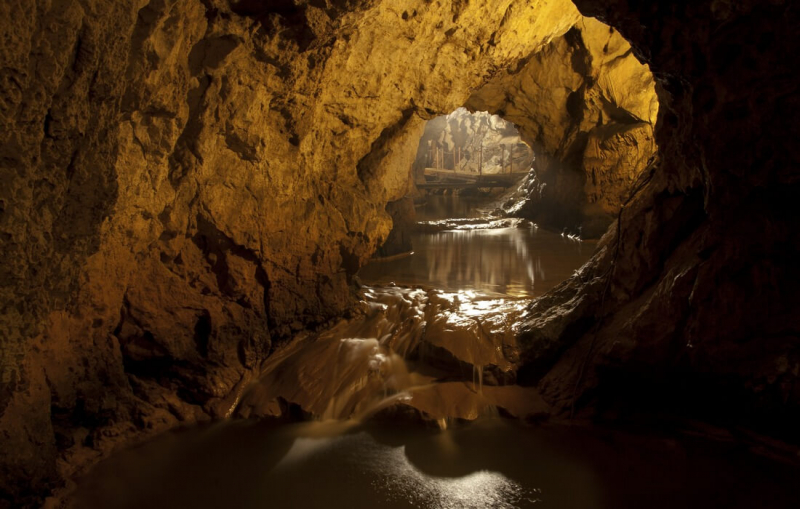
https://www.inlandia.com/ 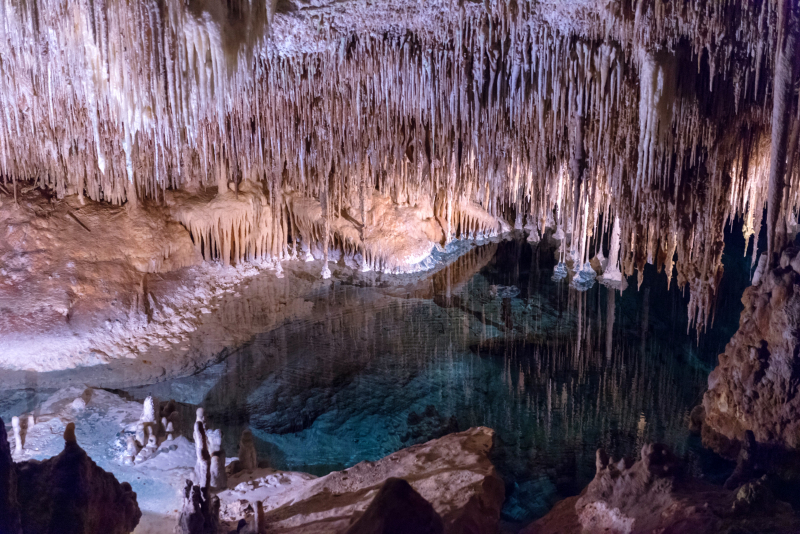
https://www.itinari.com/ -
This is a UNESCO World Heritage Site, so it has some serious tourist appeal! This is one of the world's greatest underground canyons, located in the country's Karst region, featuring sections of breathtaking natural beauty and its own ecosystem. It is considered one of the most beautiful caves in Slovenia.
Slovenia's Skocjan Caves are a cave system. Skocjan Caves were included to UNESCO's list of natural and cultural World Heritage Sites in 1986 due to their remarkable value. As a result, caverns have been recognized as one of the planet's natural treasures by international scientific circles. Skocjan Caves, one of the world's most important caves, is the most significant underground phenomenon on the Karst Plateau and in Slovenia.
The caves are approximately 6200 meters long and include the Reka River, which flows underground at the caves' entrance. Martel's Chamber, one of the continent's largest underground chambers at roughly 2.2 million cubic meters, is located within the caves.
The caves are easy to explore on foot, but keep in mind that this is one of the country's most famous sites, so expect crowds at times. Marinic Cave and Mahorcic Cave, the caverns' early sections, are popular, as is Big Collapse Doline, an underground canyon.Length: 6,200 m
Address: Matavun 12, 6215 Divača, Slovenia
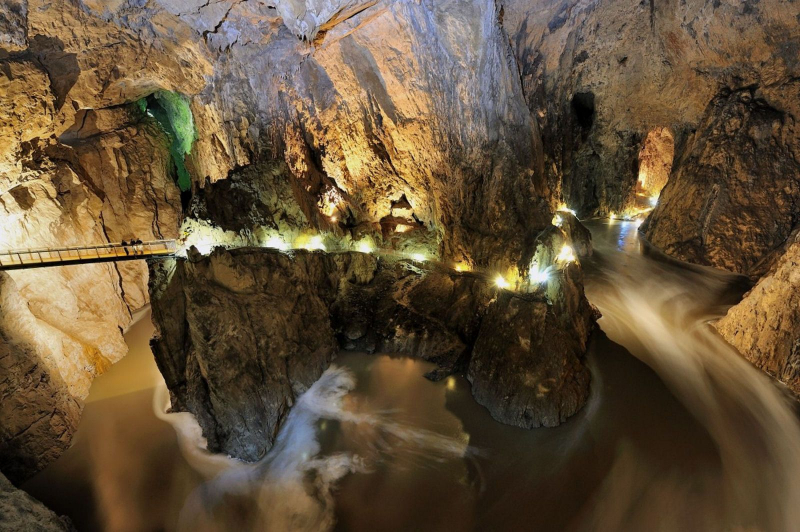
https://kopershoreexcursions.com/ 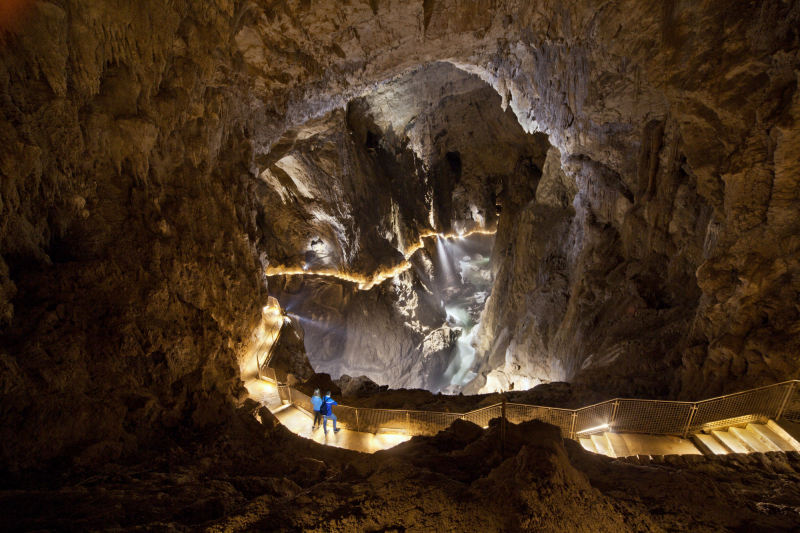
https://travelslovenia.org/ -
The Cross cave was discovered in 1832 and is located in the Loz Valley, which is well worth a visit in and of itself! The cave is named after the Holy Cross Church in nearby Podloz and contains 45 subterranean lakes with varying shades of emerald green. This is a big name in the natural world and a great cave to visit for environmental purists. It's packed with nature, with around 45 species.
The Lo Valley's Cross Cave is located between the Lo Karst Field, Cerknica Karst Field, and the Bloke Plateau. The cave is named after the neighboring Podloz Holy Cross Church. The cave's chain of around 45 subterranean lakes of emerald green water makes it unique among Karst caves.
The Loz Valley Tourist Association prepared the cave for visits in the 1950s. The Ljubljana Cave Research Society was afterwards in charge of it. The Friends of Cross Cave Association has been looking after it since the 1990s. Cross Cave is the world's fourth-largest cave ecosystem in terms of biodiversity, with 45 species of organisms, some of which were not found until 2000. The cave was discovered in 1832, but Slovene cavers were the first to explore the area of the cave that includes lakes and stream channels in 1926.
The cave has two passageways, one easy and one difficult, with most visitors opting for the easier option – Pisani Rov, which is reached by small boat.Length: 8,273 m
Address: Bloška Polica 7, 1384 Grahovo, Slovenia
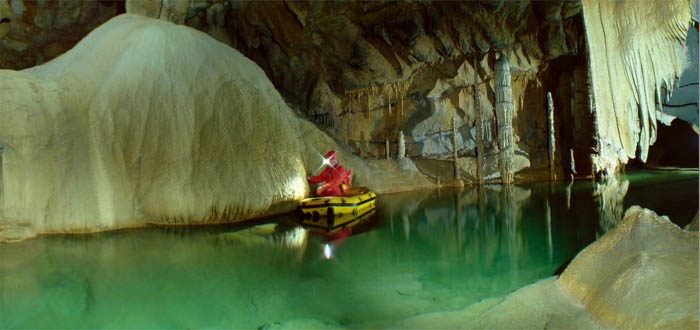
https://en.wikipedia.org/ 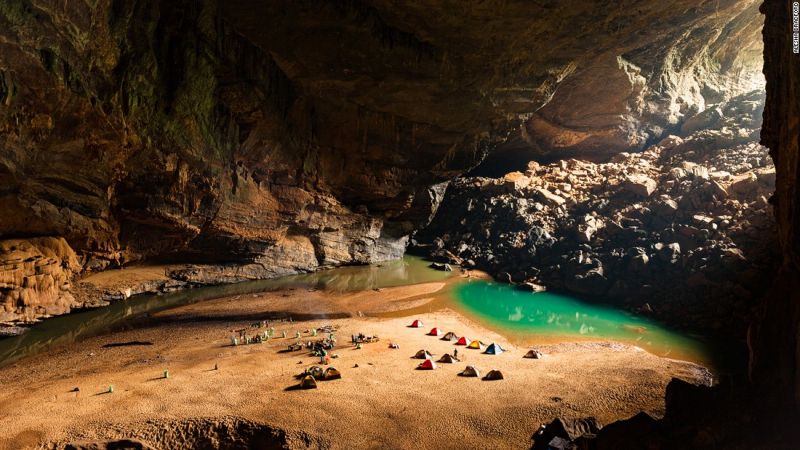
https://edition.cnn.com/ -
Dimnice is an 8-kilometer-long cave with a 180-meter-deep stream. There are two levels of tunnels. The top passages are dry and lined with lovely dripstones, as well as tourist paths. The lower tunnels include an underground stream that flows into the Rizana River spring. The cave and its environs are a veritable treasure trove of karst phenomena. The dripstone formations, which may easily make the Guinness World Records, are the most popular among visitors.
This is one of the newer caverns to visit, with tours available every Sunday. Because of the fog that seems to rise up from the cave during the winter months, the cave is known as Smoke Cave. The cave is reached via a long winding walk and an outstanding spiral stairway. Before entering a wide hallway with large chambers, including one dubbed Dancing Hall, you must descend 39 meters to the entrance.
Two nearly 40-meter-deep chasms are joined by an underground corridor near the towns of Slivje and Markovscina, not far from the Kozina–Rijeka regional route. During the winter, the cold air entering one of the chasms drives the warmer cave air out of the other, resulting in a distinctive mist that resembles a column of smoke. Because 'dim' means smoke in Slovenian, this phenomena lends the cave its name.
Length: 8,000 m
Location: Kozina–Rijeka, Slovenia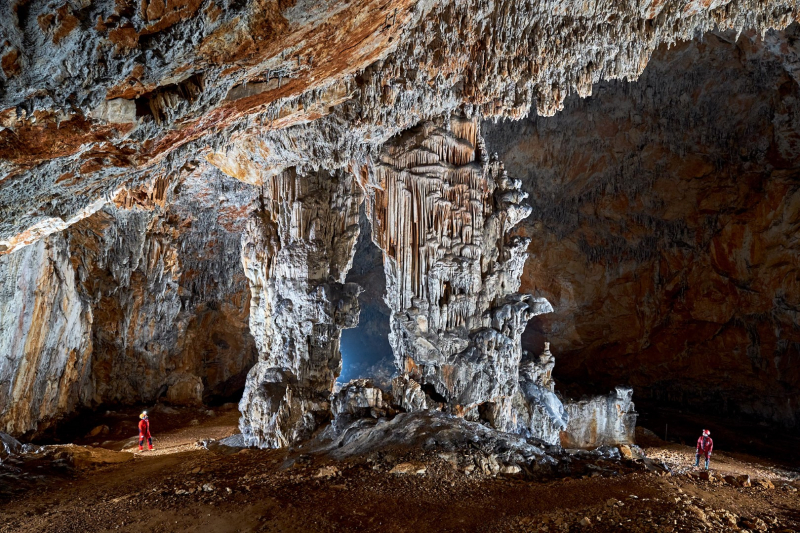
https://www.visitkras.info/ 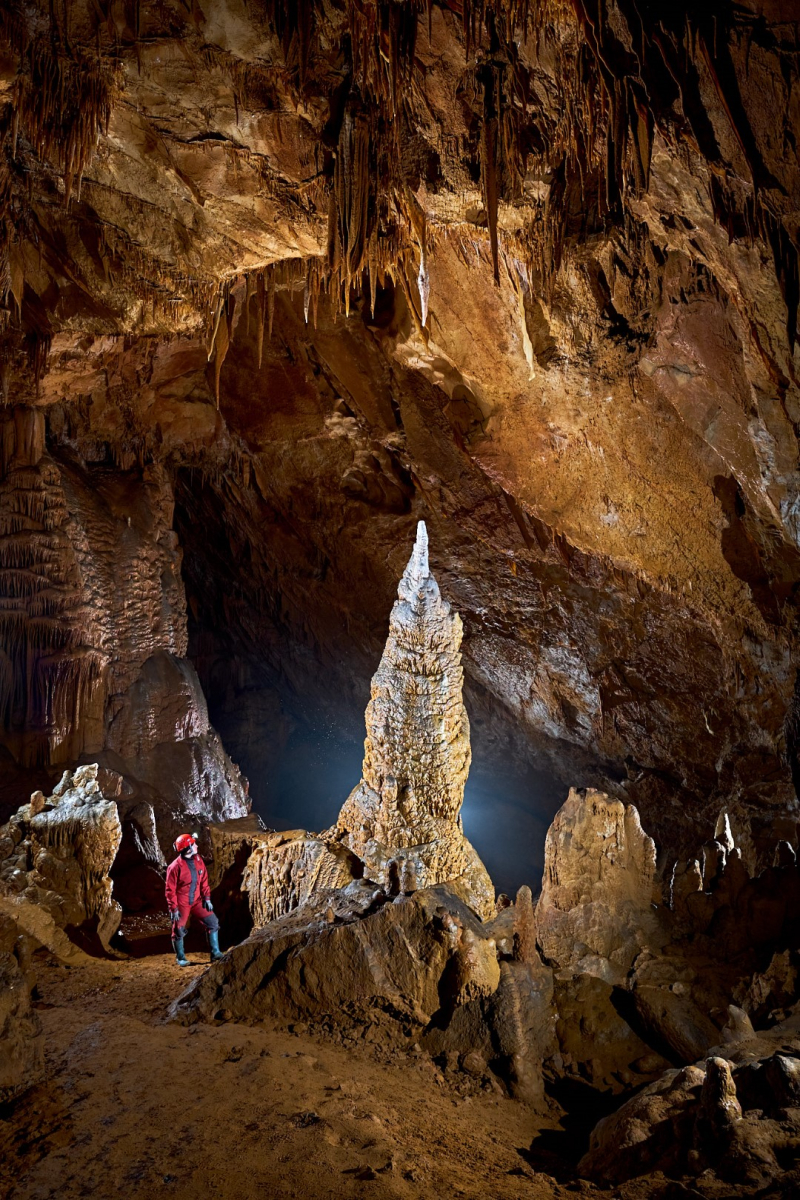
https://www.visitkras.info/ -
This amazing cave may be found in the Grosuplje district of central Slovenia. This is one of the most beautiful caves in Slovenia. The cave was discovered in 1926 and consists of seven separate rooms, all of which are easily accessible on foot. During the winter months, there are some stunning stalactite and stalagmite formations, including ice stalactites.
The most beautiful subterranean cave in the Dolenjska region, Zupanova jama, is located near the settlement of Cerovo, right off the Grosuplje-Turjak side road and approximately 700 meters from another local landmark, Tabor, a fortified ancient church. Locals were only familiar with one of the cave's chambers before its discovery, which they utilized as an ice pit. The cave complex is 330 meters long and 122 meters deep. It's reached through 478 steps and a 600-meter-long walkway. It features all of the peculiarities of karst caves, including abysses, tunnels, various types of dripstones, shallow calcerous sinter pools, and ice dripstones in the winter, in addition to six chambers.
The caves' waters are likewise crystal pure, and the caves are home to a variety of species. Visits to the cave are limited to weekends and bank holidays, and only by appointment. Because the trip lasts around an hour, make sure to schedule it ahead of time to avoid disappointment.Length: 330 m
Location: Grosuplje, Slovenia
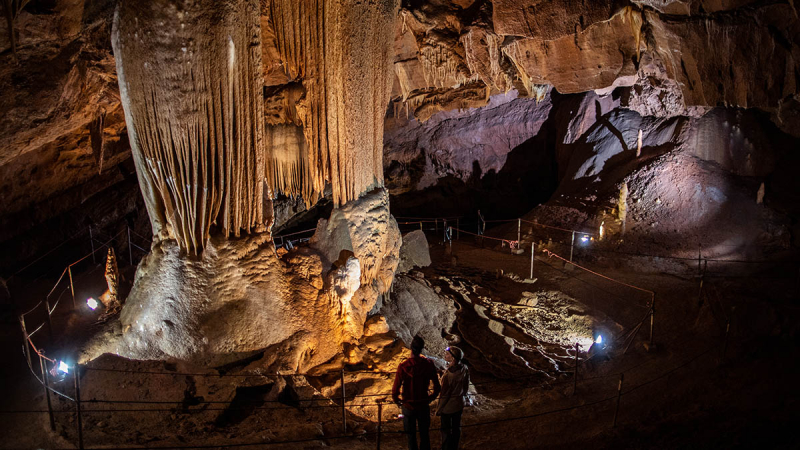
https://www.visitljubljana.com/ 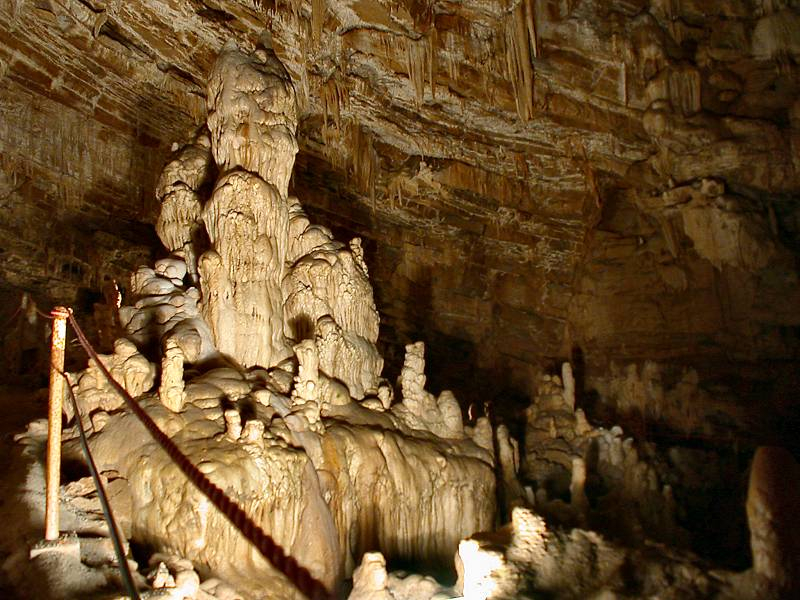
https://www.showcaves.com/ -
This cave is unique and is also referred to as the Great Ice Cave. Why? It's because it's ice-cold! This cave, located in the Trnovo Forest, is not suitable for novice cave tourists due to poor lighting, although it does offer the advantage of being free to enter.
The Ledena jama cave is a Karst cave or chasm with a permanent ice floor. Even though the frigid air from winter is kept within during the summer months, the ice remains inside regardless of the season. Despite the freezing temperatures, there is a lot of plant and animals here, especially on the cave's western wall. The cave's surroundings are a protected natural area. In the winter, ice forms in specific microclimate circumstances, causing the water to freeze. Underground water (rainwater) freezing in ice caves is the primary source of ice. The forest also aids in the preservation of low temperatures when the ice surface is exposed to the south and occasionally basking in the sun.
Ice caves can be discovered at heights of roughly 1000 meters in Slovenian climate conditions. Only 10% of the 150 ice caves can be located at lower elevations. The most notable is the Ledena jama cave in Stojna, which was originally named Ledena jama v Fridrihstajnskem gozdu in the cadastre.Length: unknown
Location: Trnovo Forest, Slovenia
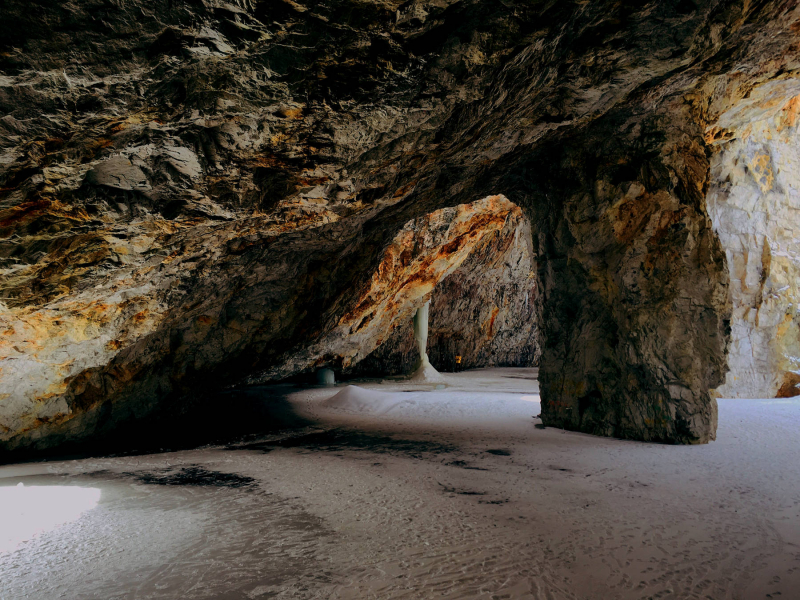
https://www.showcaves.com/ 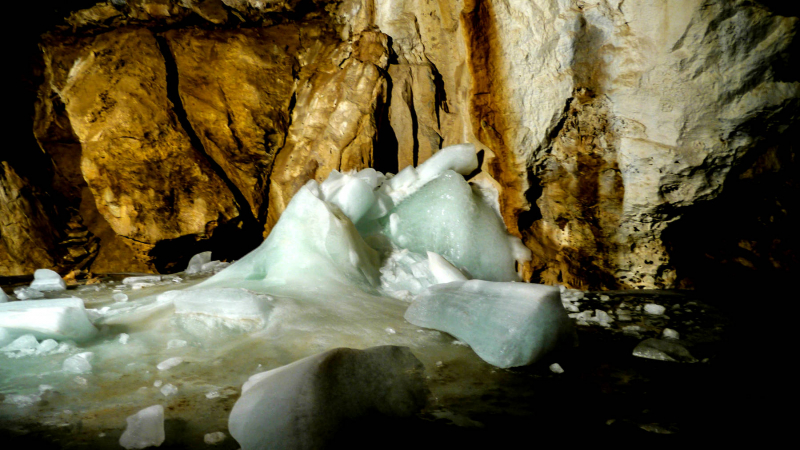
https://www.showcaves.com/ -
Crna Jama is located 3 kilometers from Postojna, in the lush green countryside. This cave is open for tourists everyday from June to September and connects to the main Postojna cave system further down the line. The cave is bisected by the River Pivka, and you will descend to the bottom of a steep plunge into the wide cave channel.
After there, the road follows the river through the cave until it reaches a very tiny corridor that leads to yet another tunnel. Because of the hue of the speleothems found inside, the cave is also known as Black Cave. It's worth noting that there aren't many chambers in this cave; instead, it's one long corridor.
Crna Jama (Black Cave) was named after the speleothems' black color. Smoke from torches and other sources of fire typically stained the speleothems. It was different in this cave. When man first entered the cave, the speleothems were already black. According to one idea, smoke from massive fires outside the cave entered the cave and colored the speleothems. The area was more or less like steppe during the Ice Age, when the temperature was quite low, and the dry remains of trees and plants frequently caught fire. As a result, the cave's stalagmite is a rich resource for climatology research.
Crna Jama is essentially one large chamber. The floor has been smoothed, and the space, like many other caves in the vicinity, has been utilized for celebrations. Postojna Cave is reached via a tunnel at the far end. However, despite being the largest of the three, the hall was rarely used. The issue is the cave's entrance, which is shaped like a large bowl and acts as a cold trap, allowing chilly air to flow into the cave throughout the winter.
Length: unknown
Location: Postojna, Slovenia
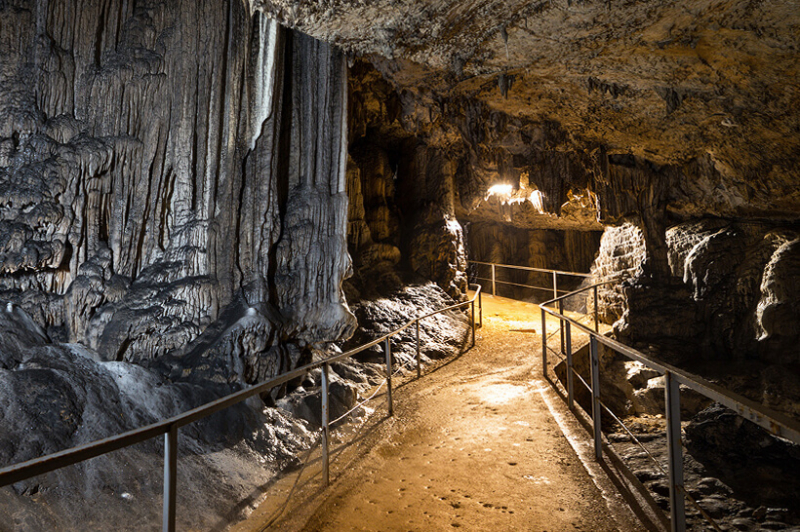
https://www.postojnska-jama.eu/ 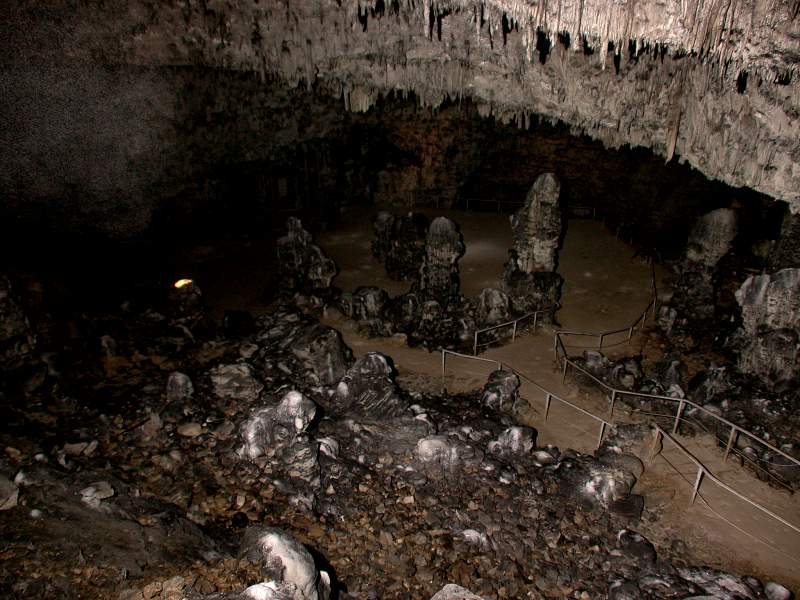
https://www.showcaves.com/ -
For some, just seeing the gorgeous Predjama Castle is enough, but while you're there, go underground and explore the cave's secrets. The Predjama Castle cave was produced by the Lokva stream, and signatures of visitors dating back to the 15th century can be found inscribed on the cave's main entrance on the second level. It ranks as one of the most beautiful caves in Slovenia.
The Western Passage, which has small parts, is suitable for more experienced cavers. Other tourists, on the other hand, can readily observe the first and second levels, especially Erazem's Gap and Fizenca and Stable and Names Passage, where those signatures stated earlier can be found.
The Karst world, located just a few kilometers from Postojna Cave, provides an extraordinary experience in the mythical world of knights. For more than 800 years, the impregnable medieval marvel has been poised in the heart of a 123-meter-high cliff. There is a network of secret tunnels behind the world's largest cave castle, from which the knight Erazem of Predjama would go on his raiding exploits. A bat colony lives in the cave beneath Predjama Castle.
Length: unkonwn
Address: Predjama 1, 6230 Predjama, Slovenia
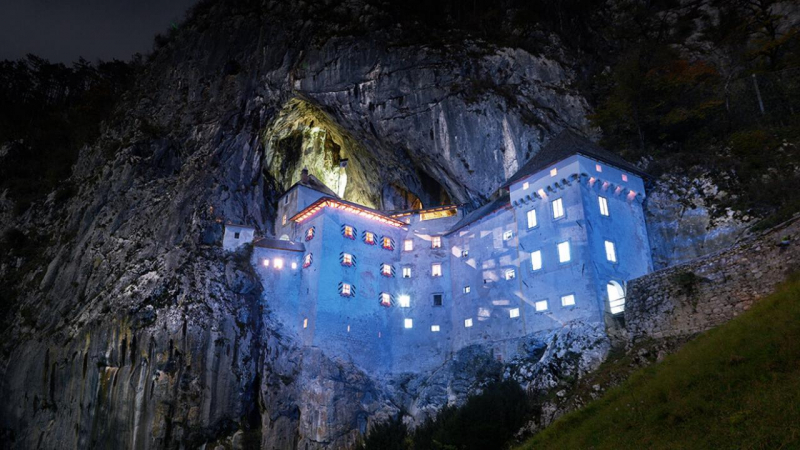
https://www.postojnska-jama.eu/ 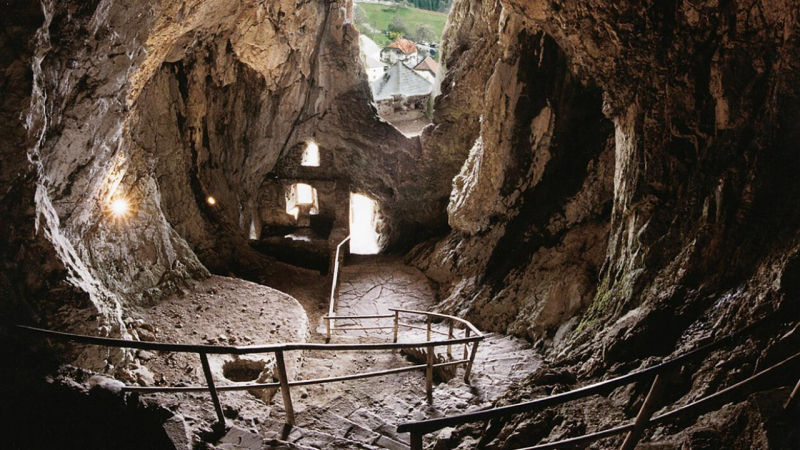
https://www.postojnska-jama.eu/ -
The Zelnjske Jame Caves, located near Kocevje, are easily accessible to anyone because they are not particularly deep. The Rakov kocjan Nature Reserve includes Zelnjske jame. The cave is accessible by public trails, and you can explore the first half of the cave and then go from one polje to the next because one of the routes runs between the caves. This cave is a lot of fun to explore and has a lot of unique karst features. The speleothems are small, predominantly moonmilk speleothems.
The cave is part of a massive cave system that is already collapsing. Today, certain parts of the cave, known as Polje, are valleys. Natural bridges are other, extremely brief sections of the cave. Some of the system's lengthier sections link valleys and allow you to follow the river to the next polje.
The genuine start of the Zelke jame cave system is closed by an iron gate at the eastern end of the dolines. Cave trekking trips can be taken to this section of the cave, which is part of a four-kilometer-long cave system. There are two trips available: one to the cave's dry section and another by boat to the cave's river section. Professional caver equipment is given, including overalls, helmets, headlights, and boots. Reservations can be made over the phone or at the Rakov Hotel.While this isn't one of the country's most popular cave systems, it is quieter, allowing you to explore the cave on your own. Of course, there are a plethora of gorgeous stalactites and stalagmites to discover, and the enormous underground rooms provide a fascinating view into the subterranean world.
Length: unknown
Location: Postojna,Slovenia
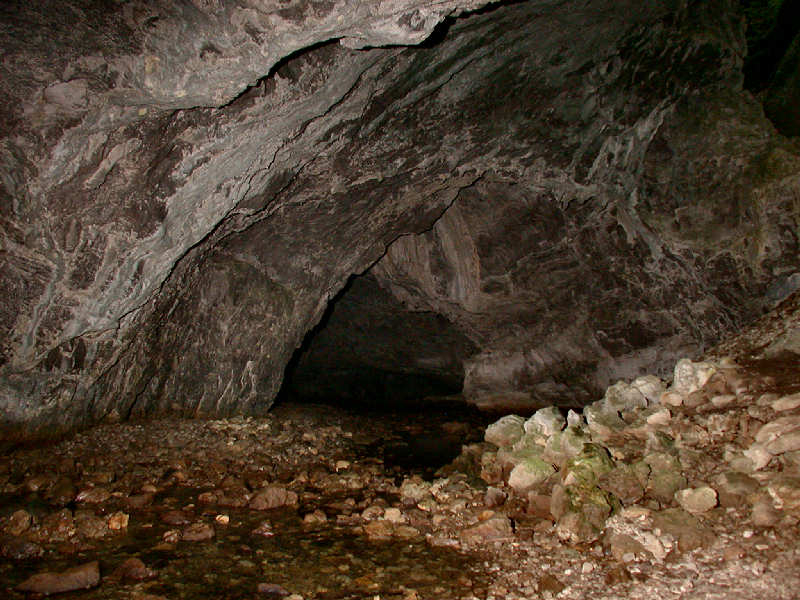
https://www.showcaves.com/ 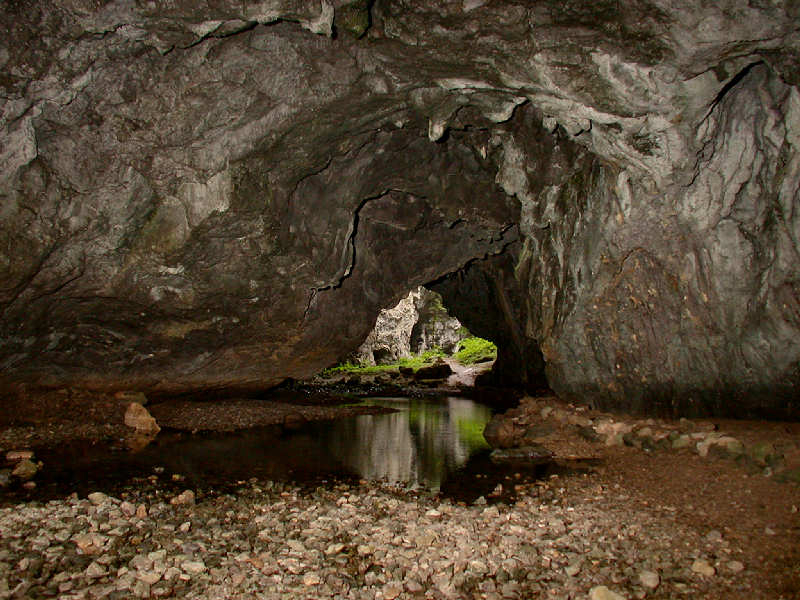
https://www.showcaves.com/ -
Planinska Cave, named for the Little Castle near its entrance, is one of Slovenia's longest water caves. It is a massive tunnel and the Unica River's subterranean bed. It's in Carniola's Inner Region. A confluence of two underground rivers can be found 500 meters from the cave's entrance: the Pivka River, which flows from the Postojna Polje through Postojna Cave, and the Rak River, which flows from Rak Skocjan through Weaver Cave to Planina Cave. This is one of Europe's greatest subterranean river confluences.
The cave entrance is in the gable end valley below 65 high cliffs in the southwestern part of Planina Polje. The cave is 6,656 meters long (21,837 ft). Water tracking has shown a link between the systems of Planina Cave and Postojna Cave, and the administration of Postojna Cave anticipates that the link will be examined by cavers as well. The integrated system would be almost 31 kilometers long (19 mi).
The cave is one lengthy corridor with many strange sights to see. Because this isn't one of the most popular caves in the area, you're less likely to encounter large crowds, which means more room. Many caverns may be found in the Postojna region. This one, on the other hand, is hidden beneath a massive limestone cliff, giving it a mysterious vibe when you first view it. Visitors can witness the historic remnants of a watermill in the Unica River flow from April until the end of September.Length: 31,000 m
Address: Planina, 6232 Planina, Slovenia
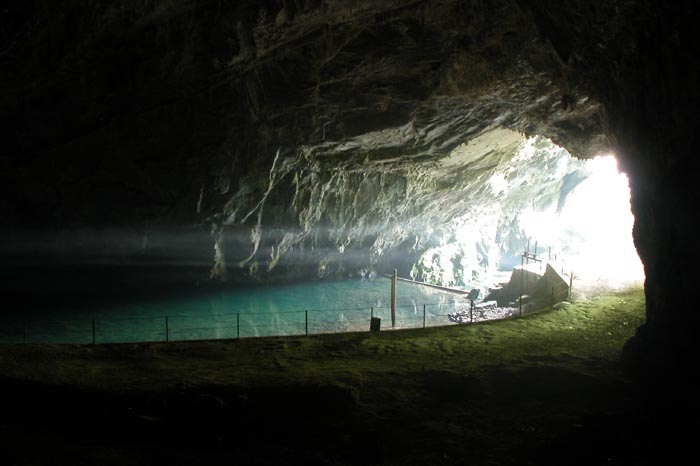
https://en.wikipedia.org/ 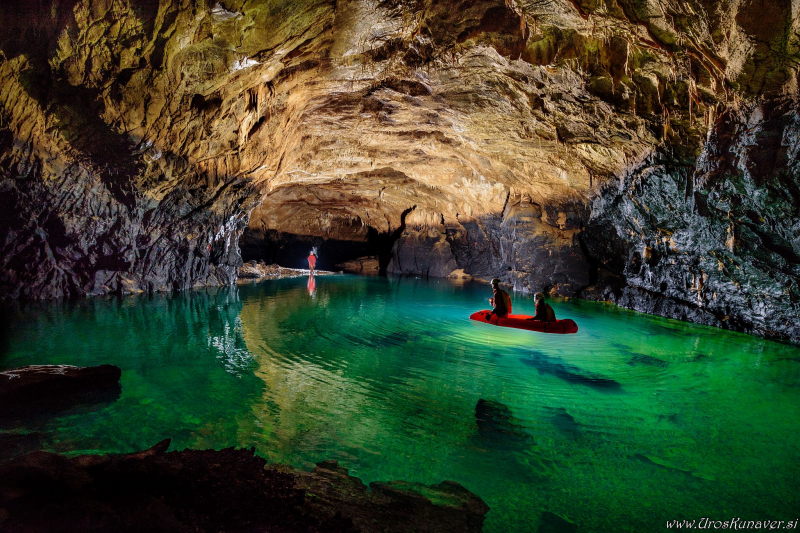
https://www.uroskunaver.si/ -
The easily accessible Kostanjevica Cave is the largest Karst cave in the Dolenjska Region, with lesser caverns, potholes, swallow holes, and springs. This is one of the most beautiful caves in Slovania.
The Gorjanci Hills, a complex karst environment with cretaceous limestone, are home to Kostanjevica Cave. Rainwater, underground watercourses, and tectonic movements have carved out surreal cave formations with fairytale themes over millennia.
A fast rise of subsurface water cracked the rock in 1937, creating a natural entry for residents of the nearby villages. In 1971, a lightning installation was completed, and tourists were given access to 300 meters of the principal features. The cave is slightly longer than 2 kilometers in length, although cavers are currently investigating the full cave system.
The cave's walkways are suited for both children and older tourists. A 40-minute guided tour with explanation is available. The cave maintains a constant temperature of 12 degrees Celsius.Length: over 2,000 m
Address: Dolšce 24, 8311 Kostanjevica na Krki, Slovenia
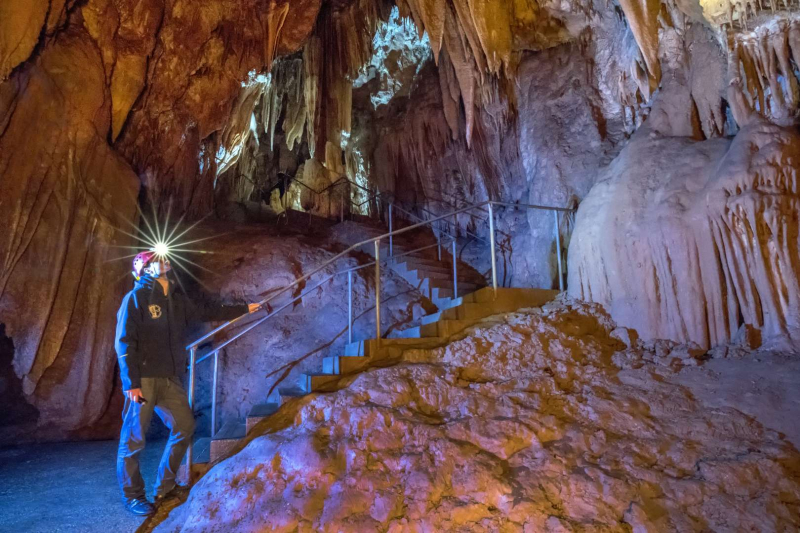
https://posavje.com/ 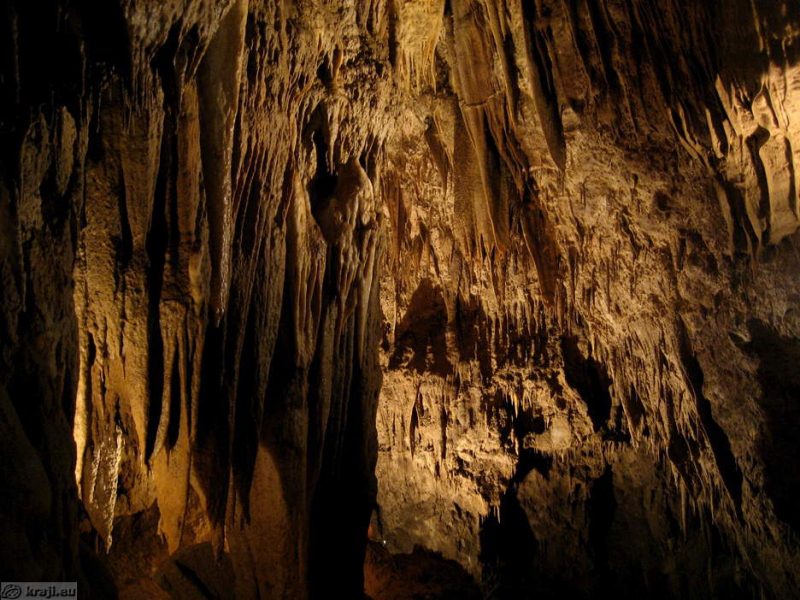
https://kraji.eu/ -
Krizna Jama Cave, on the eastern side of the Cerknica Lake in the Grahovo region, is famed for the excavated bones of the now extinct cave bear. The cave is roughly 8 kilometers long and features stunning stalactites as well as approximately 50 lakes that run parallel to the cave network.
Krina jama cave is one of Slovenia's most stunning tourist water caves. The Krina jama cave is one of the world's richest caverns, with 22 emerald lakes connected by an underground crystal-clear stream, old cave bear bones visible in side tunnels, and a large population of specialized cave dwellers. It is also Slovenia's seventh-longest cave system. People have been visiting the cave since the Neolithic Era, but it was previously ruled by the now-extinct cave bear. Paddling through the lakes in the karst subterranean and walking along the trails used by cave bears for hundreds of years is an adventure you will never forget.
The Krina jama cave's mysterious charm is hidden in its small pools. Behind sinter barriers, underground lakes up to 7 meters deep have formed. Because calcareous sinter develops faster on rapids than in calm rivers, the latter emerged.The water from the Bloke plateau flows from one lake to another through these two channels, then goes on to the Nova Krina jama cave, which is closed to visitors, and eventually emerges as the Terbrica stream at the edge of the Cerknica plain.
Length: 8,000 m
Address: Bloška Polica 7, 1384 Grahovo, Slovenia
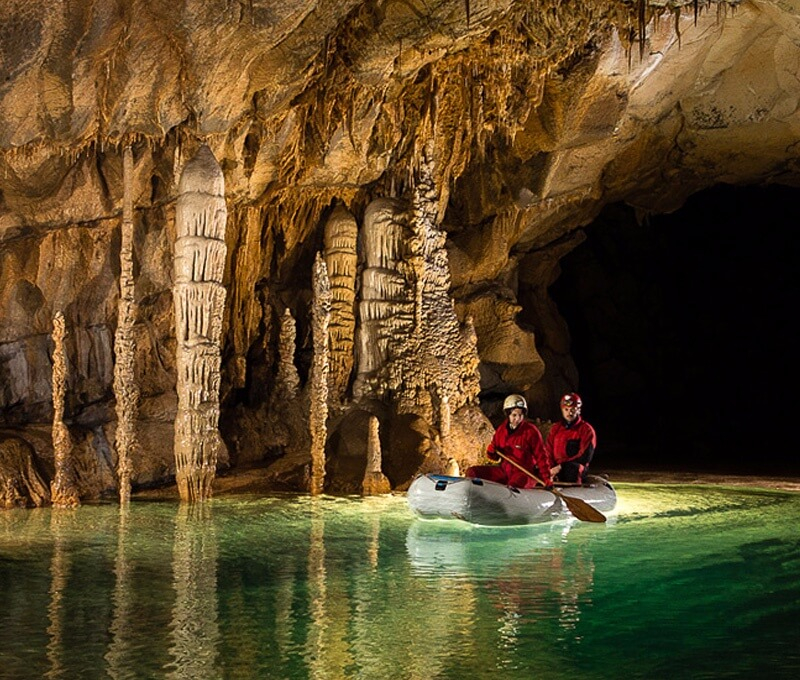
https://www.notranjski-park.si/ 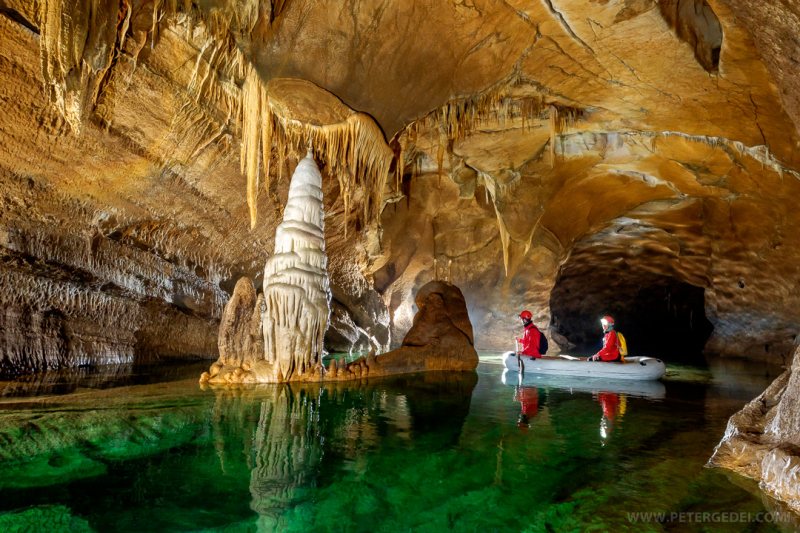
https://adeleinslovenia.com/ -
Vilenica Cave, also known as Vilenica Cave near Lokev, is Europe's oldest display cave. The cave's first visitors were reported in 1633. On the Karst Plateau in southwestern Slovenia, it is located near to the village of Lokev in the municipality of Ana. This cave, located near Sezana, is available from May to October and requires a group of 10 or more to undergo a guided tour. The cave is brightly illuminated and composed of Cretaceous limestone, allowing visitors to appreciate the exquisite stalactites and stalagmites.
The cave's first tour, which began in 1633 and is one of the oldest on record, allows guests to see the Hall of Fairies, where they can stand on a balcony and take in the incredible vistas before them. The cave's trail is long and not too tough to go around. It is, however, recommended that you wear appropriate footwear.
Until the mid-nineteenth century, it was recognized as the Classical Karst's largest, most beautiful, and most frequented cave. Postojna Cave eventually overtook it. The annual Vilenica International Literary Festival has been held in the cave, as well as other cities and villages around the Karst and elsewhere, since 1986. The most typical time for the event is in the beginning of September. The awarding of the Vilenica Prize for Literature by the Slovene Writers' Association is the highlight of the festival. The award is given to a Central European author for literary and essay writing accomplishments in the cave's Plesna Hall.
Length: 4,300 m
Address: Lokev 4v, 6219 Lokev, Slovenia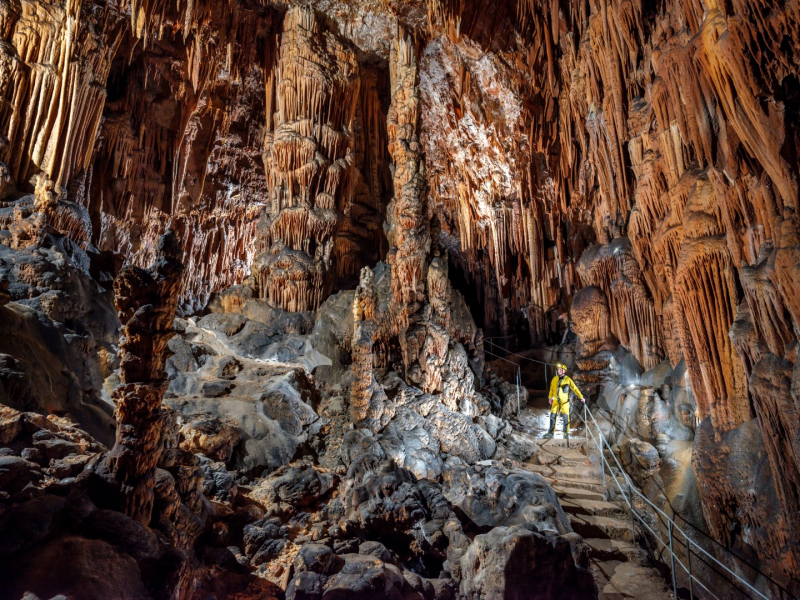
https://www.visitkras.info/ 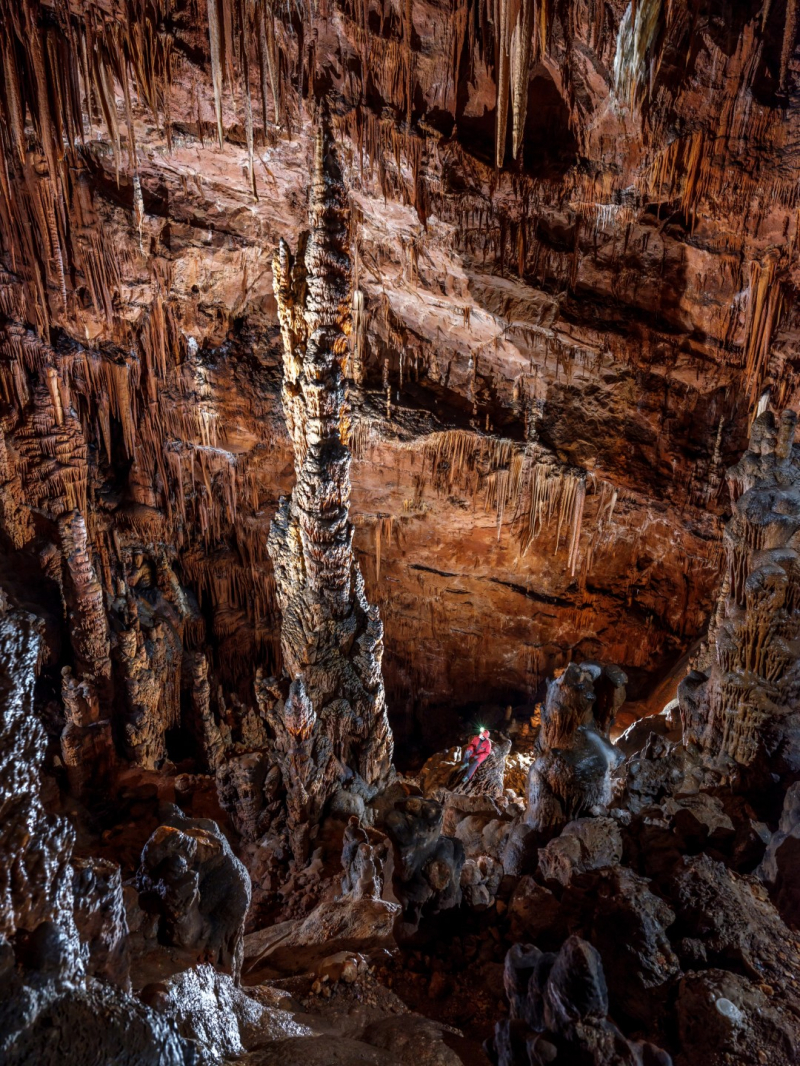
https://www.visitkras.info/ -
Antonijev Rov Cave is located near Idrija, close to the capital, and is relatively easy to reach, making it accessible to a larger number of visitors. It is also one of the few caves that offers tours all year. You'll be able to tour a subterranean chapel, enormous chambers, and even the world's second-largest mercury mine, which has been discovered to be rich in red cinnabar ore.
You'll get a tour of the mine and learn a lot about geology before getting outfitted with a helmet and overcoat and ready to go exploring. Before travelling to the Chapel of the Holy Trinity, which dates from the 18th century, you'll be able to observe old mining tools.
Length: unknown
Address: Idrija, Slovenia
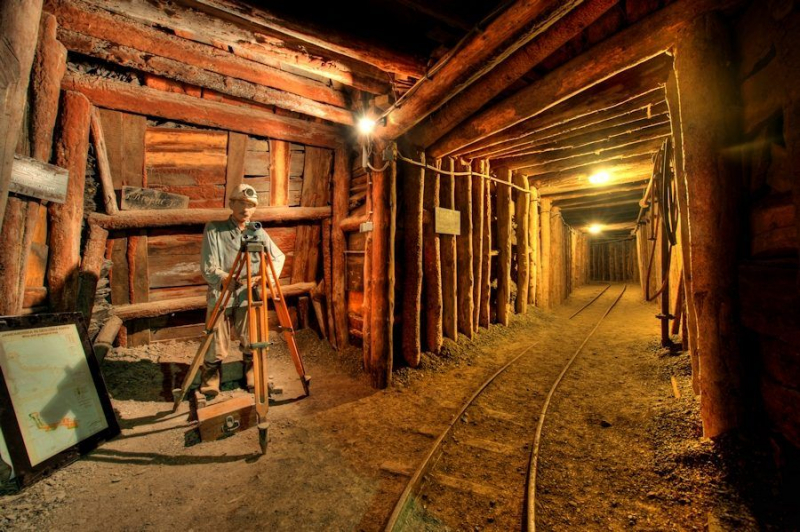
https://www.chasingthedonkey.com/ 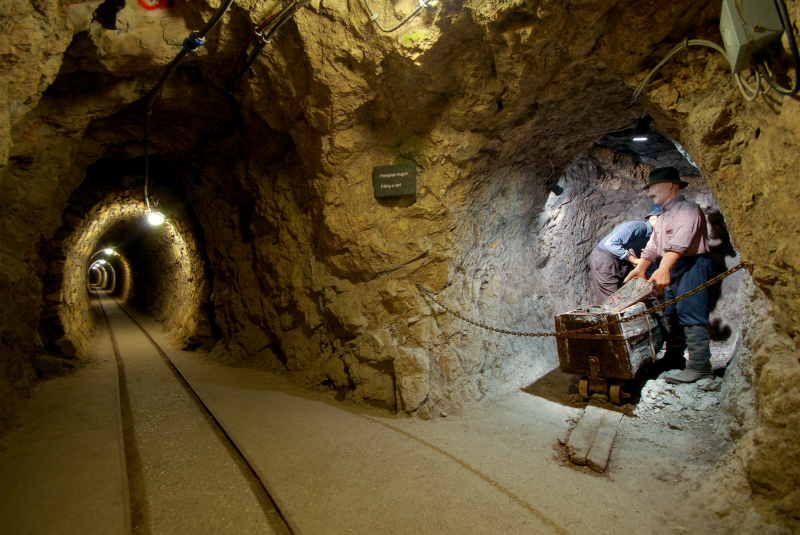
https://commons.wikimedia.org/

















